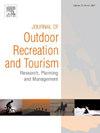COVID-19 大流行期间公园使用模式变化对环境和社会的影响:州和地方公园管理者的见解
IF 3.6
3区 管理学
Q1 HOSPITALITY, LEISURE, SPORT & TOURISM
Journal of Outdoor Recreation and Tourism-Research Planning and Management
Pub Date : 2024-10-26
DOI:10.1016/j.jort.2024.100833
引用次数: 0
摘要
公园和保护区提供了各种生态系统服务,并提供了增进人类健康和福祉的机会。然而,当公园过度拥挤导致环境和社会条件恶化时,这些益处可能会受到损害。据推测,COVID-19 大流行与公园和保护区参观人数的大幅增加有关,但使用和退化模式因地点类型而异(例如,州立公园与地方公园;城市公园与乡村公园)。在这项研究中,我们旨在了解 COVID-19 大流行期间娱乐使用模式的变化对公园的影响,以及这些变化在城乡梯度的州立公园和地方公园之间有何不同。我们发放了一份调查问卷,要求北卡罗来纳州的州立公园主管(36 人)和地方公园管理者(84 人)估计大流行之前和期间对其公园的环境和社会影响程度。我们发现,根据管理人员的回答,在大流行病期间,州立公园受到环境影响加剧的可能性是地方公园的 12 倍,受到社会影响加剧的可能性是地方公园的 23 倍,即使控制了大流行病之前的影响程度也是如此。我们发现城市公园和乡村公园之间没有明显差异。这些研究结果表明,在游客量增加的时期,地区性公园可能最容易受到环境和社会的干扰,因此需要为这些公园提供更多的资源,并更加关注其管理问题。管理意义这项研究发现,在 COVID-19 大流行之前和期间,北卡罗来纳州的州立公园比当地公园更频繁地受到社会和环境影响。这凸显了探索措施的必要性,这些措施可以在减轻公园影响的同时,保持州立公园在未来危机中的抗灾能力和恢复能力。建议采取的策略包括:-将公园的使用引导到抗灾能力更强的区域;-在公园之间建立战略合作伙伴关系,以增强公园的能力;-开展教育和宣传活动,最大限度地减少对游客的影响;-为在游客量增加期间最有可能受到影响的公园设立应急基金;-扩大可进入的绿地,以应对游客量的增加。本文章由计算机程序翻译,如有差异,请以英文原文为准。
Environmental and social impacts of shifting park-use patterns during the COVID-19 pandemic: Insights from state and local park managers
Parks and protected areas offer a variety of ecosystem services and promote opportunities that enhance human health and well-being. However, these benefits may be jeopardized when overcrowding degrades environmental and social conditions in parks. The COVID-19 pandemic is assumed to have been associated with substantial increases in visitation to parks and protected areas, but patterns in use and degradation varied by site type (e.g., state versus local parks; urban versus rural). In this study, we aimed to understand how changing recreational use patterns during the COVID-19 pandemic impacted parks, and how those changes differed between state and local parks across urban-rural gradients. We distributed a survey asking state park superintendents (n = 36) and local park managers (n = 84) in the state of North Carolina to estimate the extent of environmental and social impacts in their parks both before and during the pandemic. We discovered that, based on managers’ responses, state parks were approximately 12 times more likely to experience heightened environmental impacts and 23 times more likely to experience heightened social impacts than local parks during the pandemic, even when controlling for impact levels prior to the pandemic. We found no significant differences between urban and rural parks. These findings suggest regional parks may be the most vulnerable to environmental and social disturbances during times of heightened visitation, and thus highlight a need for both more resources and more attention to governance issues for these parks.
Management implications
This study found that state parks in North Carolina experienced more frequent social and environmental impacts, both before and during the COVID-19 pandemic, compared to local parks. This highlights the need to explore measures that can maintain state parks as sources of resilience and recovery during future crises while mitigating park impacts. Proposed strategies include:
- •Directing park usage to more resilient areas.
- •Establishing strategic partnerships between parks to enhance capacity.
- •Education and outreach to minimize visitor impacts.
- •Establishing emergency funds for parks most likely to be impacted during times of heightened visitation.
- •Expanding accessible greenspace in anticipation of increased visitation.
求助全文
通过发布文献求助,成功后即可免费获取论文全文。
去求助
来源期刊

Journal of Outdoor Recreation and Tourism-Research Planning and Management
HOSPITALITY, LEISURE, SPORT & TOURISM-
CiteScore
6.70
自引率
5.30%
发文量
84
期刊介绍:
Journal of Outdoor Recreation and Tourism offers a dedicated outlet for research relevant to social sciences and natural resources. The journal publishes peer reviewed original research on all aspects of outdoor recreation planning and management, covering the entire spectrum of settings from wilderness to urban outdoor recreation opportunities. It also focuses on new products and findings in nature based tourism and park management. JORT is an interdisciplinary and transdisciplinary journal, articles may focus on any aspect of theory, method, or concept of outdoor recreation research, planning or management, and interdisciplinary work is especially welcome, and may be of a theoretical and/or a case study nature. Depending on the topic of investigation, articles may be positioned within one academic discipline, or draw from several disciplines in an integrative manner, with overarching relevance to social sciences and natural resources. JORT is international in scope and attracts scholars from all reaches of the world to facilitate the exchange of ideas. As such, the journal enhances understanding of scientific knowledge, empirical results, and practitioners'' needs. Therefore in JORT each article is accompanied by an executive summary, written by the editors or authors, highlighting the planning and management relevant aspects of the article.
 求助内容:
求助内容: 应助结果提醒方式:
应助结果提醒方式:


